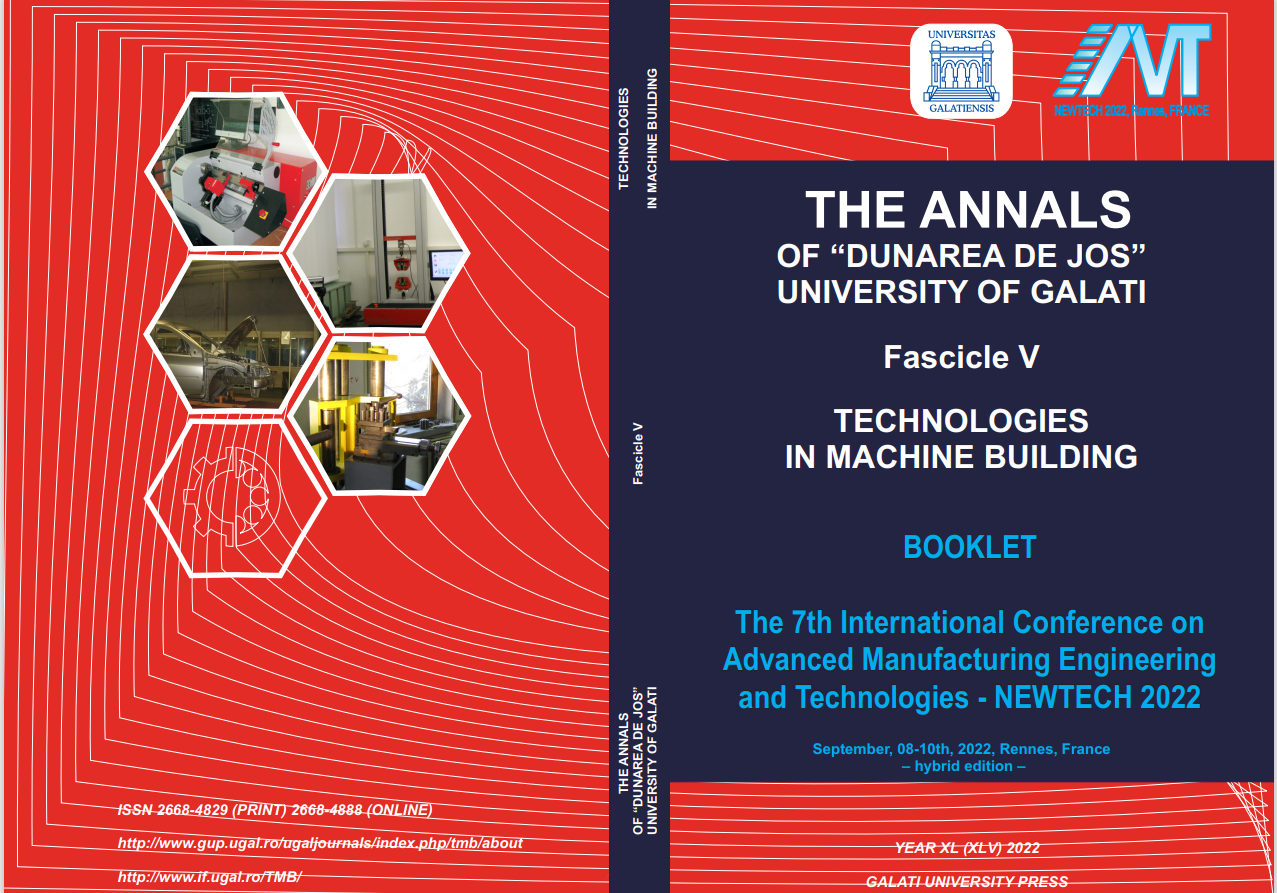Feasibility and parametrical study of an incremental sheet bending process using a finite element model
Abstract
Metal sheet air-bending is a well-established forming process heavily used in different
industrial sectors. It relies basically on a punch and a die with a v-opening that a have a specific depth
for each bending angle and radius. Which induces a high-cost tooling, reduces the process’s flexibility
and make it suitable only for mass production. For medium or low quantity production more flexible
forming processes are needed. In this work we evaluate the feasibility of incremental sheet bending.
Where a hemispherical tool follows a trajectory to bend the sheet. Will the bending angle be uniform?
How is this uniformity affected by the sheet’s width and the trajectory parameters? To answer these
questions, we conduct a parametrical study using a finite element model of bending of simply
supported sheet and the tool follows a sinusoidal trajectory. We develop a procedure to measure the
resulting bending angle and its uniformity. We in-crease the sheet’s width and for each value we
change the trajectory’s spatial period. We obtain a good uniformity for small spatial periods and it
decreases for larger values. We quantify springback variation with these two parameters. These results
give a good evaluation of the feasibility of the process, shows the effect of the sheet’s width and the
trajectory’s spatial period on the bending angle and its uniformity. This process is an alternative
flexible bending process for low and medium productions. The results help the designer in choosing
the right parameters to have a uniform bending angle.


